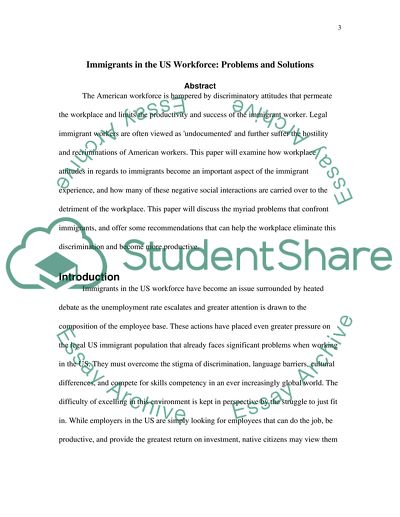Cite this document
(Immigrants in the US Workforce Research Paper Example | Topics and Well Written Essays - 5000 words, n.d.)
Immigrants in the US Workforce Research Paper Example | Topics and Well Written Essays - 5000 words. Retrieved from https://studentshare.org/human-resources/1725097-problems-encountered-by-immigrants-entering-the-us-workforce
Immigrants in the US Workforce Research Paper Example | Topics and Well Written Essays - 5000 words. Retrieved from https://studentshare.org/human-resources/1725097-problems-encountered-by-immigrants-entering-the-us-workforce
(Immigrants in the US Workforce Research Paper Example | Topics and Well Written Essays - 5000 Words)
Immigrants in the US Workforce Research Paper Example | Topics and Well Written Essays - 5000 Words. https://studentshare.org/human-resources/1725097-problems-encountered-by-immigrants-entering-the-us-workforce.
Immigrants in the US Workforce Research Paper Example | Topics and Well Written Essays - 5000 Words. https://studentshare.org/human-resources/1725097-problems-encountered-by-immigrants-entering-the-us-workforce.
“Immigrants in the US Workforce Research Paper Example | Topics and Well Written Essays - 5000 Words”, n.d. https://studentshare.org/human-resources/1725097-problems-encountered-by-immigrants-entering-the-us-workforce.


